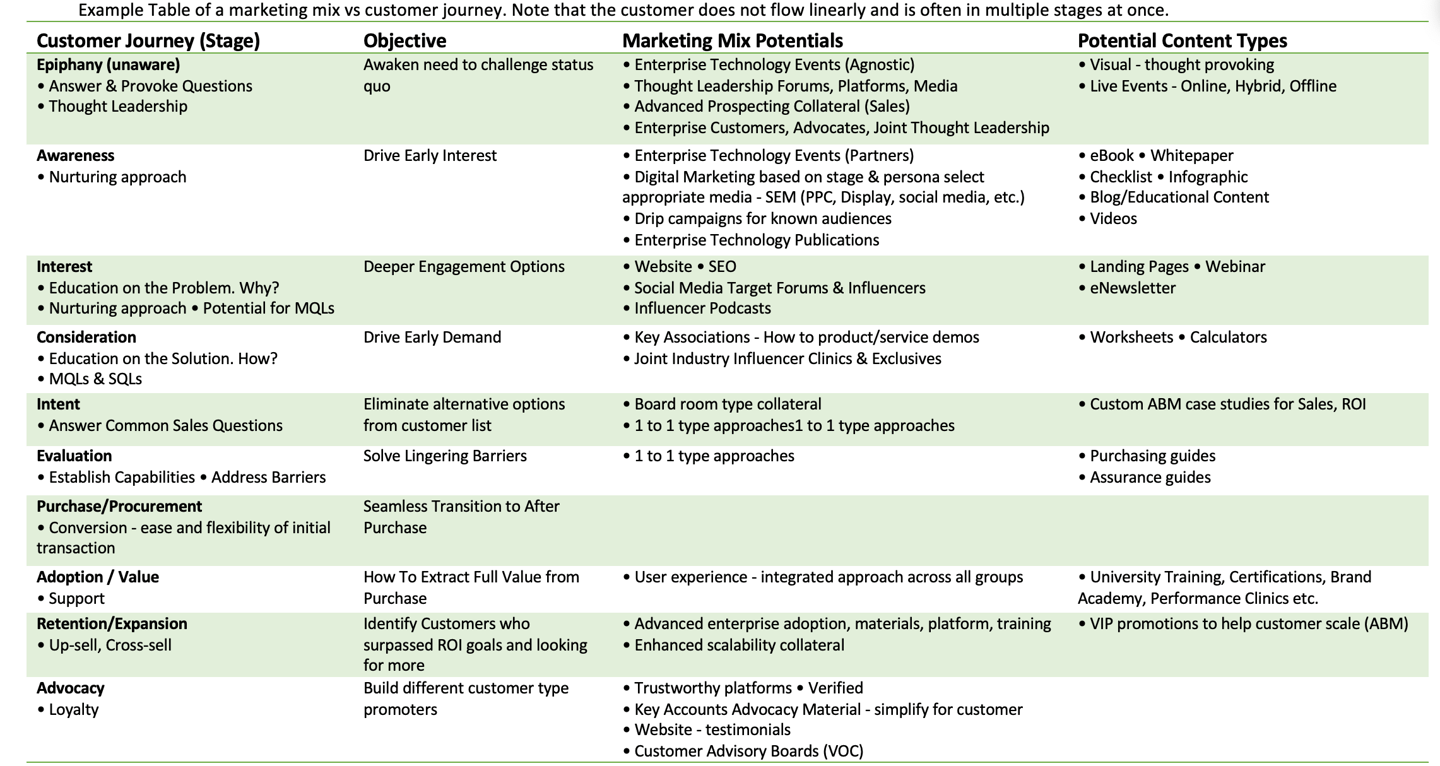More Mud.
"We know what the customer needs." How? Why? Or is there anything to back this up? It doesn’t seem to matter at this point.
Rui Lapa
11/17/2022


After 25 years in the heavy equipment industry and 15 years as a professional marketer running campaigns, product launches, websites, active drip campaigns, email campaigns, events, customer journey maps, personas, sales collateral, PowerPoints, marketing teams, dealing with customer input, stakeholder input, and more, I find much of the marketing online and offline is mud thrown at a moving target.
Why? I wish there was one answer that fits all, but there is not. However, the one input I have faced, heard, and debated about the most can be summarised in the following cliche:
How? Why? Or is there anything to back this up? It doesn’t seem to matter at this point.
I was recently asked how I select a marketing mix (channel mix). Below is the basic answer.
Delivering well-positioned messages at precise moments for targeted audiences requires a continuous mix of research, insight, testing and measurement. This process is iterative, non-linear, and evolves with varying inputs. Though the below table is separated into a linear flow, in practice, these are overlapping and integrated—like a live conversation—passing data back and forth from each other.
#1: The targeted audience concentrates on who is involved in this conversation.
Audiences stem from business meetings, plans, and objectives and become specific once a supporting product marketing plan is established.
Core building blocks:
Inputs: business plans, market potential, and marketing strategy
Marketing plans built
Buyer/customer personas
#2: Positioned messages focus on what value the product or service brings to the customer relationship.
Core building blocks
SWOTs
Competitive Analysis
Empathy maps, attached to customer personas—jobs to be done, pain points, etc.
#3: Precise moments point out what stage the customer is at on their journey.
This is where we get into selecting the appropriate marketing channels to deliver the messages.
Core building blocks
Customer Journey Maps, including all stages
Epiphany, Awareness, Interest, Consideration, Intent, and Evaluation
Purchase/Procurement
Adoption/Value, Retention/Expansion, Advocacy
An Integrated Marketing Communications Plan, or marketing mix, builds on core business objectives and factors all the above inputs
Key takeaways:
Basic 101 of selecting a marketing mix starts with Who, then proceeds to the other steps.
The effort to select the best marketing mix with a limited budget is a challenge.
The above does not matter if, in the end, there is an over-reliance on intuition.
I agree that intuition is a solid part of doing business, as is data analytics, business intelligence, and research. The question of which one is more important—if there is one—or how much to rely on either one is for another day.
Notes:
this is a simplified version,
this is not a GTM strategy,
I have not dived into any details of technology, data analytics, business intelligence or other
I have not covered the metrics or KPIs
"We know what the customer needs."




After 25 years in the heavy equipment industry and 15 years as a professional marketer running campaigns, product launches, websites, active drip campaigns, email campaigns, events, customer journey maps, personas, sales collateral, PowerPoints, marketing teams, dealing with customer input, stakeholder input, and more, I find much of the marketing online and offline is mud thrown at a moving target.
Why? I wish there was one answer that fits all, but there is not. However, the one input I have faced, heard, and debated about the most can be summarised in the following cliche:
How? Why? Or is there anything to back this up? It doesn’t seem to matter at this point.
I was recently asked how I select a marketing mix (channel mix). Below is the basic answer.
Delivering well-positioned messages at precise moments for targeted audiences requires a continuous mix of research, insight, testing and measurement. This process is iterative, non-linear, and evolves with varying inputs. Though the below table is separated into a linear flow, in practice, these are overlapping and integrated—like a live conversation—passing data back and forth from each other.
#1: The targeted audience concentrates on who is involved in this conversation.
Audiences stem from business meetings, plans, and objectives and become specific once a supporting product marketing plan is established.
Core building blocks:
Inputs: business plans, market potential, and marketing strategy
Marketing plans built
Buyer/customer personas
#2: Positioned messages focus on what value the product or service brings to the customer relationship.
Core building blocks
SWOTs
Competitive Analysis
Empathy maps, attached to customer personas—jobs to be done, pain points, etc.
#3: Precise moments point out what stage the customer is at on their journey.
This is where we get into selecting the appropriate marketing channels to deliver the messages.
Core building blocks
Customer Journey Maps, including all stages
Epiphany, Awareness, Interest, Consideration, Intent, and Evaluation
Purchase/Procurement
Adoption/Value, Retention/Expansion, Advocacy
An Integrated Marketing Communications Plan, or marketing mix, builds on core business objectives and factors all the above inputs
Key takeaways:
Basic 101 of selecting a marketing mix starts with Who, then proceeds to the other steps.
The effort to select the best marketing mix with a limited budget is a challenge.
The above does not matter if, in the end, there is an over-reliance on intuition.
I agree that intuition is a solid part of doing business, as is data analytics, business intelligence, and research. The question of which one is more important—if there is one—or how much to rely on either one is for another day.
Notes:
this is a simplified version,
this is not a GTM strategy,
I have not dived into any details of technology, data analytics, business intelligence or other
I have not covered the metrics or KPIs
"We know what the customer needs."


